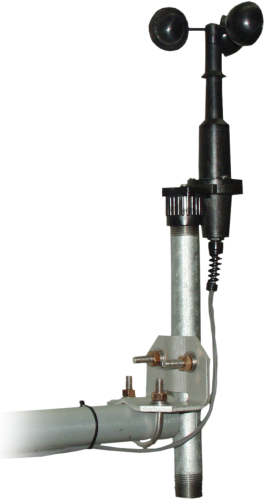Comprehending Various Kinds Of Anemometers for Different Applications
All You Need to Find Out About Anemometers: Exactly How They Work, Why They Issue, and Where to Use Them
Anemometers, however usually ignored in the realm of clinical instruments, play a crucial function in various areas, using valuable understandings into wind speed and air movement patterns. Comprehending the technicians behind these gadgets is essential for any individual seeking to harness the power of this information. From meteorologists tracking weather patterns to engineers designing frameworks with wind loads in mind, the applications of anemometers are significant and varied. As we dive into the details of anemometer technology, we will certainly reveal the inner workings of these gadgets, their value, and the essential factors to consider when picking the right anemometer for certain applications.

Anemometer Fundamentals
A crucial tool utilized to determine wind speed and instructions, the anemometer plays a critical duty in weather forecasting and different industries. An anemometer generally consists of 3 or 4 cups that rotate in the wind, a vane that aims into the wind, and sensing units to track the rotations or movements. By calculating the turnings or motions over a details period, the anemometer can identify wind speed. The vane aids figure out wind direction by aiming into the wind, providing beneficial information for weather projecting, air travel, maritime procedures, environmental monitoring, and wind power applications.
There are different kinds of anemometers available, consisting of cup anemometers, vane anemometers, hot-wire anemometers, and sonic anemometers, each with its special features and applications. Mug anemometers are commonly made use of for basic wind speed dimensions, while vane anemometers are preferred for directional dimensions. Hot-wire anemometers appropriate for low airspeeds, and sonic anemometers are excellent for high-precision measurements in study and commercial settings. Comprehending the basics of anemometers is essential for accurate wind information collection and analysis across various sectors.
Concepts of Anemometer Procedure
Building on the foundational understanding of anemometer fundamentals, the principles of anemometer procedure clarify the auto mechanics behind wind rate and direction dimensions. Mug anemometers, for instance, have three or even more cups that capture the wind, creating them to rotate much faster as the wind speed rises. Hot-wire anemometers depend on a heated wire that cools down as wind passes over it, with the price of cooling determining the wind speed.
Significance of Anemometers
Anemometers play a vital duty in gauging wind rate and instructions, giving essential data for weather projecting, environment studies, ecological monitoring, and air travel operations. Meteorologists rely on anemometers to gather accurate wind information, aiding them comprehend weather condition patterns, anticipate storms, and issue timely cautions to the public. Wind ranch operators use anemometers to assess wind problems and maximize electricity manufacturing from wind generators.
Applications Across Various Industries
Applications of anemometers extend throughout diverse sectors, showcasing their adaptability and utility past meteorology. In the renewable resource sector, anemometers play a crucial duty in examining wind conditions for wind ranch placements, making certain ideal power production. Industries like construction and mining use anemometers to keep track of wind rates, essential for safety procedures, especially when working at elevations or in open-pit mines where solid winds can pose threats. Anemometers are also indispensable in the aviation market, assisting pilots in comprehending see this website airspeed and wind instructions for safe take-offs and touchdowns. The maritime field benefits from anemometers for ship navigating, aiding sailors expect climate changes and change courses appropriately. In farming, anemometers aid farmers in handling plant spraying by offering real-time data on wind rate to stay clear of drift. Additionally, anemometers locate great site applications in HVAC systems to enhance air movement and boost energy efficiency in buildings. The diverse use cases of anemometers highlight their value throughout numerous sectors, highlighting their indispensable role in enhancing operational safety and effectiveness (anemometer).

Choosing the Right Anemometer for Your Requirements
Picking the appropriate anemometer tailored to your particular requirements is vital for obtaining precise wind rate and instructions dimensions. When picking an anemometer, consider elements such as the designated application, needed dimension array, ecological problems, and wanted attributes. For basic purposes, a cup anemometer is suitable for measuring wind speed, while a vane anemometer offers wind direction data. Hot-wire anemometers are optimal for low airspeed measurements, and ultrasonic anemometers use high accuracy and toughness.

Verdict
In verdict, anemometers play a vital role in gauging wind speed and direction throughout various sectors. Comprehending the principles of anemometer procedure is important for picking the ideal device for certain needs. From weather forecasting to air travel, anemometers are vital tools for ensuring and gathering exact data safety and security in different applications. It is necessary to consider the value of anemometers in order to make informed choices when picking the most appropriate device for determining wind problems.
There are numerous kinds of anemometers available, including cup anemometers, vane anemometers, hot-wire anemometers, and sonic anemometers, each with its special attributes and applications. Mug anemometers are commonly used for basic wind speed measurements, while vane anemometers are liked for directional dimensions. Hot-wire anemometers are appropriate for reduced discover this airspeeds, and sonic anemometers are excellent for high-precision dimensions in study and commercial setups.Structure on the fundamental understanding of anemometer essentials, the concepts of anemometer procedure clarify the mechanics behind wind speed and direction measurements. For basic objectives, a mug anemometer is ideal for gauging wind rate, while a vane anemometer supplies wind direction data.